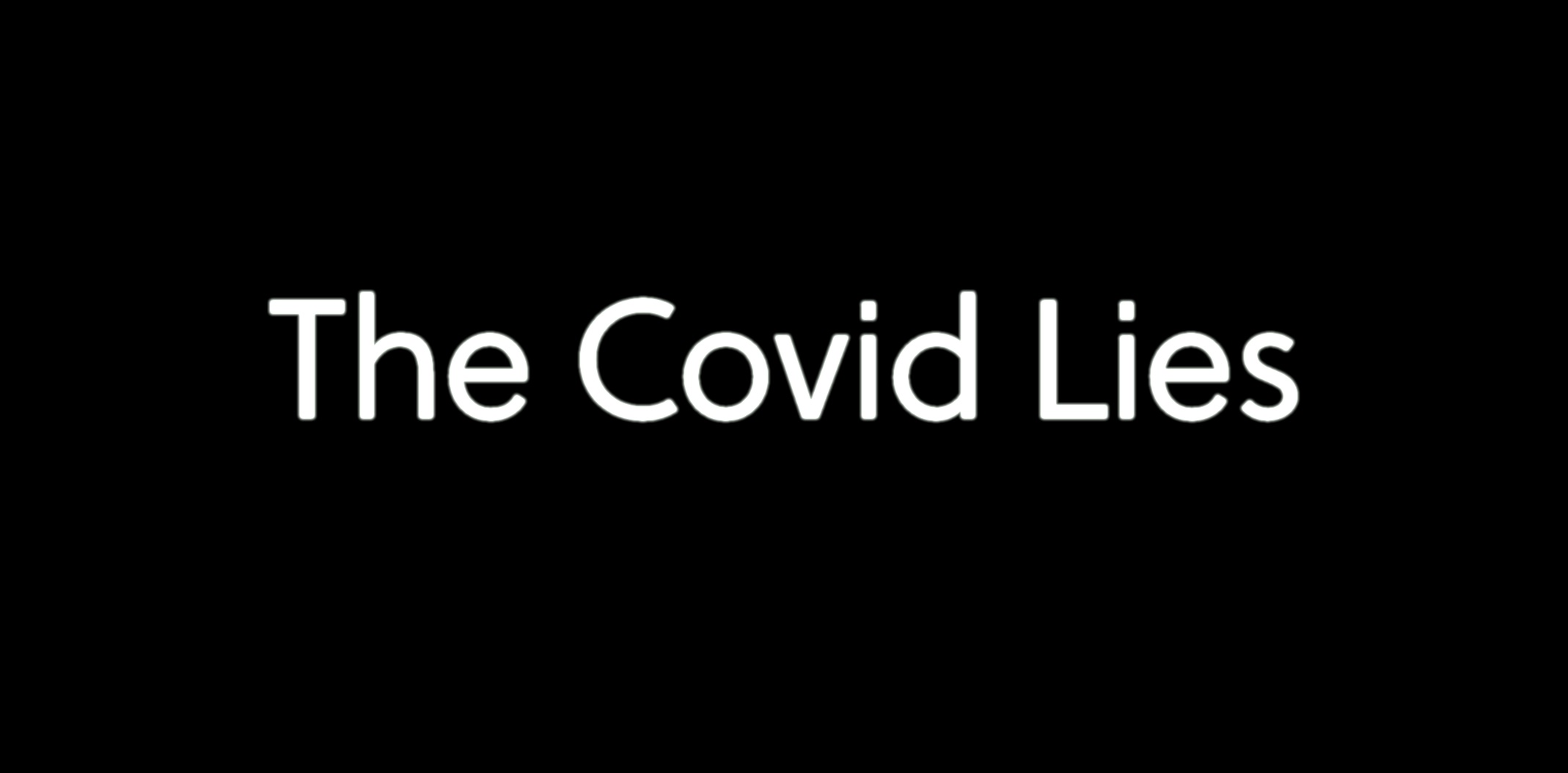European Commission Regulation implementing the global pharmaceutical-military “black box”
Also a brief response to Robert Barnes’ recent post.
In the Maria Zeee interview, I said that recently, legal researchers in Europe had located some of the mechanisms through which the global bioterrorism/medical martial law program operates to surveil, capture, control and kill people in European countries.
Some of the mechanisms can be found in corporate contracts signed between European governments and pharmaceutical bioweapons manufacturers.
See, for example, Sasha Latypova’s report on the content of emails between top European war criminals.
- february 6, 2023 Letters from the underworld:
…Ursula von der Leyen – EU Commissioner, whose accomplishments include negotiating incredible predatory Pfizer supply contracts on behalf of all EU member states via text messages with Pfizer CEO Albert Bourla. In these contracts, EU countries had to put up state assets as collateral, waive all quality control, import and consumer protection laws and surrender national sovereignty, i.e. they were not allowed to change vaccine liability legislation by their own parliaments? Predatory contracts that were completely written to protect Pfizer’s so-called “commercial interests…”.
Many acronyms are used, the most relevant are “EC” = European Commission, “MS” = Member States, “EP”=European Parliament.
The key sentence is that Ursula is “willing to personally call the competent health ministers to prevent the use of Article 5 (2)”
what is it about? Article 5 (2) refers to “Article 5 (2) of Directive 2001/83” – Authorization for emergency use in a European Member State, given by each of the Member States separately in their own countries. [Article 5 (2). Member States may temporarily authorize the distribution of an unauthorized medicinal product in response to the suspected or confirmed spread of pathogens, toxins, chemical agents or nuclear radiation which may cause harm.”]
This is a conditional marketing authorization issued by the European Medicines Agency for all EU members simultaneously…..
The problem is that Ursula never intended to keep these promises and, in any case, it is not possible to produce mRNA “vaccines” with the safety, efficacy and manufacturing quality required of pharmaceuticals.
What Ursula really needed from this process was to bind all European member states to a pact that promised a “robust” CMA, so that they could not have independent authority over vaccines distributed in their countries……
The Article 5 route would have meant that each member state could license the product, and then have the power to revoke the authorization if any problems were detected.
Article 5 also provides an exemption from liability for the manufacturer, but makes it impossible to authorize the product.
With the CMA route, none of the member states could exercise independent decision making, so she could then bind them all to the same, far-fetched and almost completely redacted Pfizer, Moderna and AstraZeneca contracts, which disclaimed any liability anyway, and furthermore prohibited countries from changing their own laws on liability…”
Other mechanisms are included in the European Commission’s regulations on “countermeasure” authorizations and funding mechanisms, a paper trail recently located by a legal researcher working in one of the EU member states.
Below is a chronological reorganization and expansion of the raw content of the email Sasha posted last week:
- february 8, 2023 – Note for legal cases in Europe: on EU provisions for medical countermeasures. Legal structures were created in the European Union echoing US structures as evidence of the pre-planned “plandemic” global event.
Bailiwick readers in Europe may find it useful to start by downloading and perusing the documents below (the English versions of which I have uploaded to my Bailiwick WordPress backup site), and then explore Eur-Lex, the EU legal document database, which has translations of the documents into member state languages.
- 1998.09.24 EU Decision 2119
- 2001.11.06 EU Directive 83
- 2003.06.25 EU Directive 63
- 2004.04.21 EU Regulation 851
- 2013.10.22 EU Decision 1082
- 2016.03.15 EU Regulation 369
- 2020.04.14 EU Regulation 521
- 2022.11.23 EU Regulation 2371
Knowing the names, numbers and contents of the regulations will help you in your efforts to educate and mobilize social and political momentum for your government officials to pass blocking legislation at the nation-state level; repeal “black box” laws at the EU level; and/or withdraw your country from the European Union.
The EU provisions correspond to U.S. provisions regarding “medical countermeasures” and the establishment of concentration camps in homes and businesses (banning free association, trade and human movement within countries and across borders) in the event of “natural or man-made catastrophe.”
To recap, the U.S. biomedical police state – controlled by the World Health Organization operating as the military branch of the Bank for International Settlements – came into effect through laws passed by the U.S. Congress; executive orders issued by U.S. presidents; administrative/Cabinet agency regulations published in the Federal Register; and state and local versions thereof. See the executive summary at the bottom of the U.S. Domestic Bioterrorism Program.
The European biomedical police state came into effect through analogous regulations passed by the European Parliament and the Council of the European Union, published in the Official Journal of the European Union.
Prior to locating these European Commission regulations, many EU member state lawyers thought that regulation of biological weapons (falsely identified by government officials as regulation of “vaccines”) was covered by the provisions of EU law governing Conditional Marketing Authorization (CMA).
It turns out that this is not the case.
The backbone of the EU biomedical police state is formed by the provisions described below.
These are the rules that the BIS/WHO puppets in the EU have passed, to support their joint program to poison you and your children behind the mask of public health, and force you to fund the mass murder program as well.
1998/09/24 – Council Decision No 2119/98/EC – Establishment of a network for the epidemiological surveillance and control of communicable diseases in the Community.
Article 1.
The objective of this Decision is to set up a network at Community level to promote cooperation and coordination between Member States, with the assistance of the European Commission, in order to improve the prevention and control, in the European Community, of the categories of communicable diseases specified in the Annex.
This network shall be used for:
- the epidemiological surveillance of these diseases, and
- an early warning and response system for the prevention and control of these diseases.
As regards epidemiological surveillance, the network will be established by putting in permanent communication, by all appropriate technical means, the European Commission and the structures and/or authorities which, in each Member State and under its responsibility, are competent at national level and responsible for collecting information relating to the epidemiological surveillance of communicable diseases, and by establishing procedures for the dissemination of relevant surveillance data at Community level.
As regards the early warning and response system, this network will be set up by putting in permanent communication, by appropriate means, the Commission and the competent public health authorities of each Member State in charge of determining the measures that may be necessary to protect public health.
The European Commission shall be responsible for coordinating the network in collaboration with the Member States.
Annex
- Vaccine-preventable diseases
- Sexually transmitted diseases
- Viral hepatitis
- Food-borne diseases
- Waterborne diseases and diseases of environmental origin
- Nosocomial infections
- Other diseases transmissible by non-conventional agents (including Creutzfeldt-Jakob disease)
- Diseases covered by the International Health Regulations (yellow fever, cholera, and plague)
- Other diseases (rabies, typhus, viral hemorrhagic fevers, malaria and any other serious epidemic disease not yet classified, etc.)
2001/11/06 – Directive 2001/83/EC – Establishing a Community code relating to medicinal products for human use. See also Commission Directive 2003/63/EC of 25 June 2003
Title II. Scope of application
This Directive shall apply to medicinal products for human use intended to be placed on the market in the Member States and prepared industrially or manufactured by a method involving an industrial process.
2004/04/21 – Regulation (EC) No 851/2004 – establishing a European Centre for Disease Prevention and Control.
Article 1. Scope of application Scope of application Scope of application Scope of application Scope of application
This Regulation establishes an independent European agency for disease prevention and control, as well as its mission, tasks and organization.
The additional provisions concern the mission, the obligations of the Member States, the operation of dedicated surveillance networks and network activities, the operation of the early warning and response system, the identification of emerging health threats, communications, management, financial provisions, implementation of the Centre’s budget, legal personality and privileges, etc.
2013/10/22 – Council Decision No 1082/2013 – Concerning serious cross-border threats to health and repealing Decision No 2119/98/EC.
Article 1 – Subject matter
This Decision lays down rules on epidemiological surveillance, monitoring, early warning and combating serious cross-border threats to health, including preparedness and response planning in relation to those activities, in order to coordinate and complement national policies…..
Article. 5. Joint procurement of medical countermeasures
1. The Union institutions and Member States wishing to do so may initiate a joint procurement procedure in accordance with … the financial rules applicable to the general budget of the Union … with a view to the advance procurement of medical countermeasures against serious cross-border threats to health.
2. the joint procurement procedure referred to in paragraph 1 shall meet the following conditions
(a) participation in the joint procurement procedure shall be open to all Member States until the start of the procedure
(b) the rights and obligations of Member States not participating in the joint procurement, in particular those relating to the protection and improvement of human health, shall be respected
(c) the joint procurement does not affect the internal market, does not constitute discrimination or a restriction of trade and does not give rise to distortions of competition
(d) the joint procurement does not have any direct financial impact on the budget of Member States not participating in the joint procurement.
Annex. Criteria for selection of communicable diseases and related special health issues to be covered by network epidemiological surveillance
- Communicable diseases and related special health issues that cause, or are likely to cause, significant morbidity or mortality throughout the Union, in particular where the prevention of these diseases requires a Union-wide coordination approach.
- Communicable diseases and related special health issues where information exchange can provide early warning of public health threats.
- Serious and rare communicable diseases and special health issues that would not be recognized at the national level and where data sharing would allow hypotheses to be generated from a broader knowledge base.
- Communicable diseases and related special health issues for which effective preventive measures with a protective health benefit are available.
- Communicable diseases and related special health problems for which a comparison by Member States would contribute to the evaluation of national and Union programs.
2016/03/15 – Regulation (EU) 2016/369 – On the provision of emergency assistance in the Union
Article. 1. Subject matter and scope
This Regulation establishes the framework within which Union emergency assistance may be granted through specific measures appropriate to the economic situation in the event of an on-going or potential natural or man-made disaster….
Article. 2. Activation of emergency assistance
…The decision on the activation of emergency assistance under this Regulation in the event of an actual or potential disaster shall be taken by the Council on the basis of a proposal from the Commission, specifying where appropriate the duration of the activation.
2020/04/14 – Regulation (EU) 2020/521 – Activation of emergency assistance under Regulation (EU) 2016/369, and amendment of its provisions taking into account the COVID-19 outbreak
EU government action, retroactive to February 1, 2020 to implement the “emergency support” regulation for Covid-19 crises.
Whereas
Member States have declared, as parties to the Joint Procurement Agreement referred to in Article 5 of Decision No 1082/2013/EU of the European Parliament and of the Council, their agreement to the inclusion of ongoing joint procurement procedures under that Article in the fast-track procurement procedure established by this Regulation, under the conditions set out in this Regulation. The type of medical countermeasures to be procured and the distribution of the countermeasures to the Member States should follow any agreement reached in the framework of those ongoing procedures.
Article 1. Emergency support
Emergency support is activated under Regulation (EU) 2016/369 to finance the expenditure necessary to deal with the COVID-19 pandemic for the period from 1 February 2020 to 31 January 2022.
Annex to Regulation 2016/369/EU, Eligible actions
In the event of a pandemic with large-scale effects, the following actions may be financed
(a) temporary reinforcement of health personnel, exchange of health professionals, hosting of foreign patients or other mutual support;
(b) deployment of temporary health facilities and temporary expansion of existing facilities to relieve pressure on existing structures and increase overall health capacity;
(c) activities to support the administration of the large-scale implementation of medical testing and preparation of the necessary scientific testing strategies and protocols; and
(d) establishment of temporary quarantine facilities and other appropriate measures at the borders of the Union;
(e) development, production or purchase and distribution of medical products; and
(f) increases and conversions of production capacities for the medical devices referred to in subparagraph (e) to address shortages of supply
(g) maintenance of stockpiles of medical devices referred to in subparagraph (e) and disposal thereof
(h) actions to support the necessary steps to obtain approval for the use of the medical devices referred to in point (e), if necessary; and
(i) actions to develop appropriate methods for monitoring the development of the pandemic and the results of the measures implemented to deal with it;
(j) organization of ad hoc clinical trials of potential therapies or diagnostics in accordance with agreed Union-wide testing standards; and
(k) scientific validation of medical devices, including possible new test methods.
The above list is not exhaustive.”
Preliminary analysis by a European legal researcher on the combined effects of these directives and regulations, which corroborates the general martial law/war machine classification of the Covid-19 crises and the biological weapons classification of products marketed as “Covid-19 vaccines”
…(h) opens the door to any action they deem necessary to achieve their goal of obtaining approval for the use of medical products. Thus, regulators and suppliers are free to refrain from enforcing any provisions applicable to drugs, pharmaceuticals and medical devices.
(j) opens the door to “ad hoc” clinical trials, meaning that they do not need to conform to certified Good Clinical Practice, but only to unspecified “agreed Union-wide trial standards”
This also demonstrates the clear fraud on the European Union that they committed against all citizens, giving the impression that they had evaluated the injections according to existing standards for drug evaluation, at least on the basis of conditional marketing authorizations, while behind the scenes they were free to do whatever they wanted.
To the question of “who” had the competence for the “approval for the use of medical devices as mentioned in (e) if necessary”; can be answered with “the EU Commission”, which would not even require a change of competence, as the EU Commission has been competent for the approval of medicinal products at central level since 1995 with the new marketing authorization scheme in the EU…..
…All decisions have been signed by Margaritis Schinas, Vice President of the Commission and responsible for security in the EU, which includes coordinating the European Commission’s work to develop a European Security Union; ensuring coherence of the external and internal dimensions of security; coordinating the Commission’s work to strengthen measures to prevent, detect and respond to hybrid threats.
Schinas authorized “vaccines” but not therapeutics, so obviously there is a difference in classification, behind the scenes, between those types of products.
Normal medicines are always authorized by the European Commission, Directorate General for Health, and signed by a representative of the Director General or by the Director General herself.
In Germany they installed a new Department 6 “Health Protection, Health Safety, Sustainability” in the second half of 2019. On March 1, 2020, a military general became head of this department with two sub-departments with five specialized departments each, including departments on national and international crisis management. He was also head of the “Crown Pandemic Crisis Management Team” and headed the Ministry of Health at the end of 2021.
Effective December 2022, the European Parliament and the Council of the European Union repealed and replaced Decision No. 1082/2013/EU with Regulation No. 2022/2371/EU, expanding and tightening the legal framework for control and death at the EU level in support of the One Global Health model intended by BIS and its military arm: the World Health Organization.
2022/11/23 – Regulation (EU) 2022/2371 – On serious cross-border threats to health and repealing Decision No. 1082/2013/EU
Whereas:
- A network for the epidemiological surveillance and control of communicable diseases was established by Decision No 2119/98/EC;…its scope was extended by Decision No 1082/2013/EU…to strengthen and provide a more coordinated and comprehensive approach to health security at Union level. The implementation of that legislation confirmed that coordinated Union action on surveillance, early warning and combating these threats brings added value to the protection and improvement of human health.
- In the light of the lessons learned during the ongoing COVID-19 pandemic and in order to facilitate adequate preparedness and response at Union level to all cross-border health threats, the legal framework for epidemiological surveillance, monitoring, early warning and control of serious cross-border threats to health, including threats related to zoonoses, laid down in Decision Noo 1082/2013/EU, should be extended as regards additional information and analysis requirements relating to health systems indicators, and as regards cooperation between Member States and Union agencies and bodies, in particular the European Centre for Disease Prevention and Control (ECDC), the European Medicines Agency (EMA) and international organisations, in particular the World Health Organisation (WHO)….
Article 1. Object Object
1. In order to address serious cross-border threats to health and their consequences, this Regulation lays down rules on:
(a) the Health Security Committee (HSC);
(b) prevention, preparedness and response planning, including
(i) preparedness plans at Union and national level; and
(ii) reporting and assessment of preparedness at the national level;
(c) joint procurement of medical countermeasures; and
(d) emergency research and innovation; (e) surveillance and monitoring of emergency preparedness; and (f) emergency preparedness surveillance and monitoring
(e) epidemiological surveillance and monitoring; and
(f) epidemiological surveillance network; and
(g) early warning and response system (EWRS);
(h) risk assessment
(i) response coordination; and
(j) recognition of a public health emergency at the Union level.
2. This Regulation establishes
(a) a network of EU public health reference laboratories
(b) a network for substances of human origin; and
(c) an advisory committee for the occurrence and recognition of a public health emergency at Union level.
3. In line with the “One Health” and “Health in all Policies” approaches, the implementation of this Regulation shall be financially supported by relevant Union programmes and instruments.
Article 2 – Scope of application Scope of application
1. This Regulation shall apply to public health measures in relation to the following categories of serious cross-border health threats
(a) threats of biological origin, consisting of
(i) communicable diseases, including zoonoses
(ii) antimicrobial resistance and health care-associated infections linked to communicable diseases (“related special health issues”)
(iii) biotoxins or other harmful biological agents not related to communicable diseases;
(b) threats of chemical origin
(c) threats of environmental origin, including those due to weather conditions; and
(d) threats of unknown origin; and
(e) events that may constitute public health emergencies of international concern under the International Health Regulations (IHR) (“public health emergencies of international concern”), provided that they fall into any of the categories of threats set forth in (a) through (d).
Annex:
Criteria for selection of communicable diseases and related special health problems to be covered by epidemiological surveillance within the epidemiological surveillance network
Union surveillance will provide information for public health action at the Union level. More specifically, one of the following criteria must be met
- significant morbidity, significant mortality or emerging disease (increasing five-year trend) in a substantial percentage of Member States
- potential for causing transboundary outbreaks;
- high pathogenic threat (transmissibility and severity);
- existence of national or Union public health programs with specific objectives requiring surveillance and evaluation;
- Union surveillance adds public health value to national surveillance systems beyond what is implied by criteria 1-4.
Brief response to Robert Barnes’ recent post
Sage Hana has republished the content Barnes posted via his Locals page.
- february 14, 2023 – Robert Barnes , attorney for Brook Jackson, claims that the Department of Defense is using Pfizer as a scapegoat, which sounds exactly backwards
I responded briefly in my Gab feed, republished below. I don’t plan to address how my legal analysis diverges from Barnes’ legal analysis, because I am focused on developing litigation and social/political pressure strategies that I believe have a better chance of successfully stopping the ongoing genocide, legislatively repealing or judicially overturning the enabling laws, and bringing war criminals to justice.
Barnes’ approach does not pursue those goals, so I am unwilling to spend much time on it.
In my view, any legal strategy (civil, criminal, or administrative) that circumvents or covers up the fact that the peoples of the world are currently enduring and resisting mass murder and intentional mass poisoning is a bad strategy.
In fact, the peoples of the world are enduring a criminal military campaign, carried out through the production and use of biological weapons, deployed by people claiming to represent the U.S. Government and virtually every other national government.
War criminals fraudulently refer to deadly biological weapons as regulated pharmaceuticals (“vaccines”) and fraudulently describe the illegal injection of these toxic compounds into humans as components of a public health campaign.
Accepting and endorsing the false major premises of war criminals, as if they were true, is counterproductive.
Response to Robert Barnes’ post on the Locals:
I took a quick look at it. I think he misrepresents the evidence and arguments, but he needs to do so to try to discredit us and prop up his own strategy, so I understand why he does it.
Beyond that, I don’t know why (ie. i can only speculate) he doesn’t seem able to see the big picture, that the bioweapons program and its legal support structure long before Trump and Operation Warp Speed, cover many more “countermeasures” than Covid-19 injections alone, and that his approach to Brook’s case – accept Pfizer + Gov’s assertion that the products are pharmaceuticals (vaccines) subject to FDA regulation, and trying to argue on that basis despite the factual record making it absolutely clear that no valid FDA regulatory actions occurred and the legal/regulatory record making it absolutely clear that no valid FDA regulatory action was ever required – cedes the most important disputed issue to the benefit of Pfizer + Gov, thereby increasing the grounds for dismissal.
I think Barnes is going to take his case straight to dismissal for failing to see and present the evidence the way Sasha and I see and present it.
There will be other cases, however, in which Barnes is not involved, and eventually a plaintiff (whistleblower or not) or a group of plaintiffs will bring some of those cases properly, based on the evidence that Brook, Sasha and I have presented, as a civil suit based on the criminal actions of the defendants, or as a state, federal or international criminal prosecution for war crimes/terrorism/genocide/biological weapons/chemical weapons.
In my opinion, Barnes is just missing a good opportunity for Brook’s original case to be among the cases that begin to open those doors.
Originally published in Baliwick News
Suggest a correction







